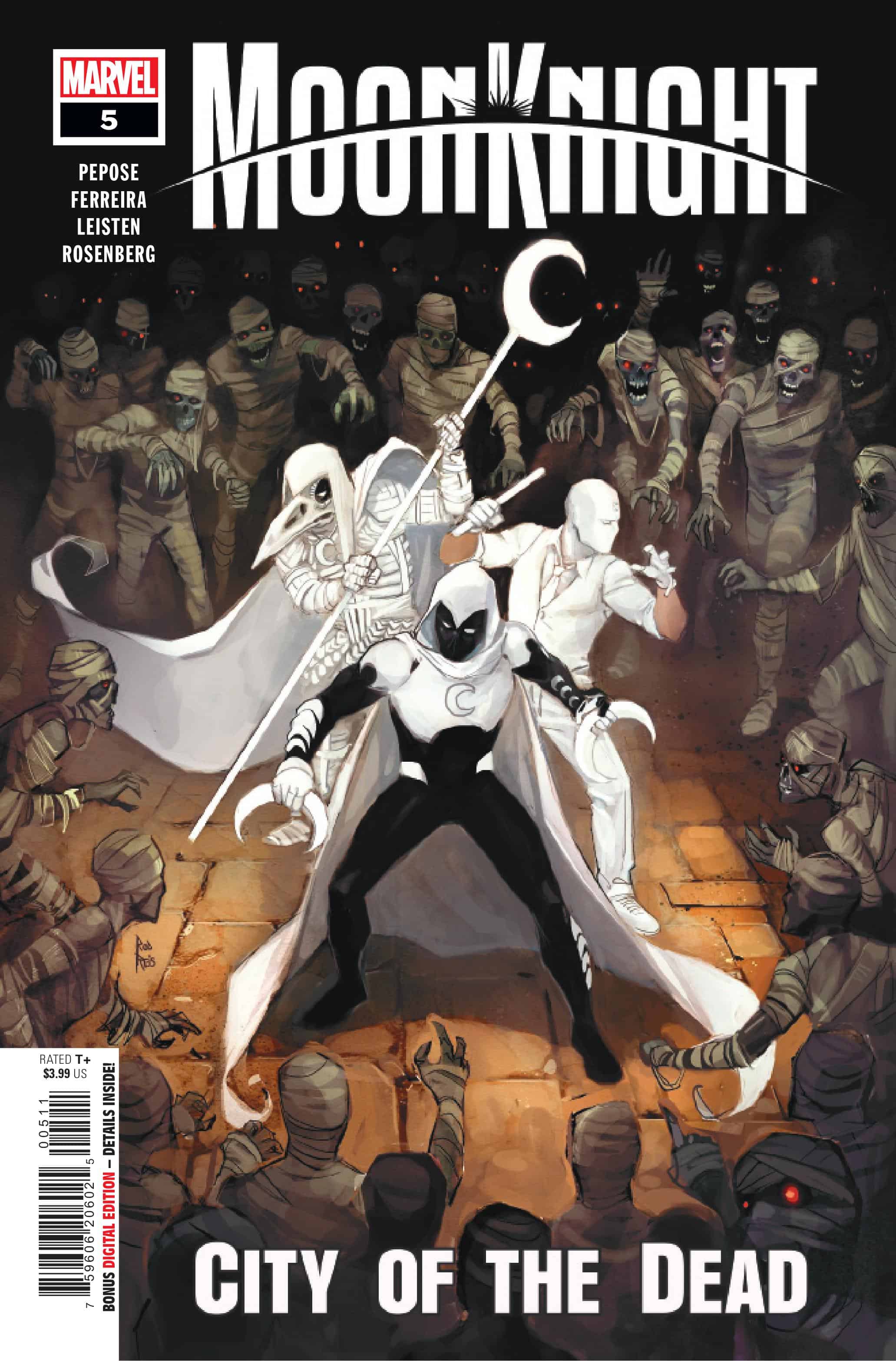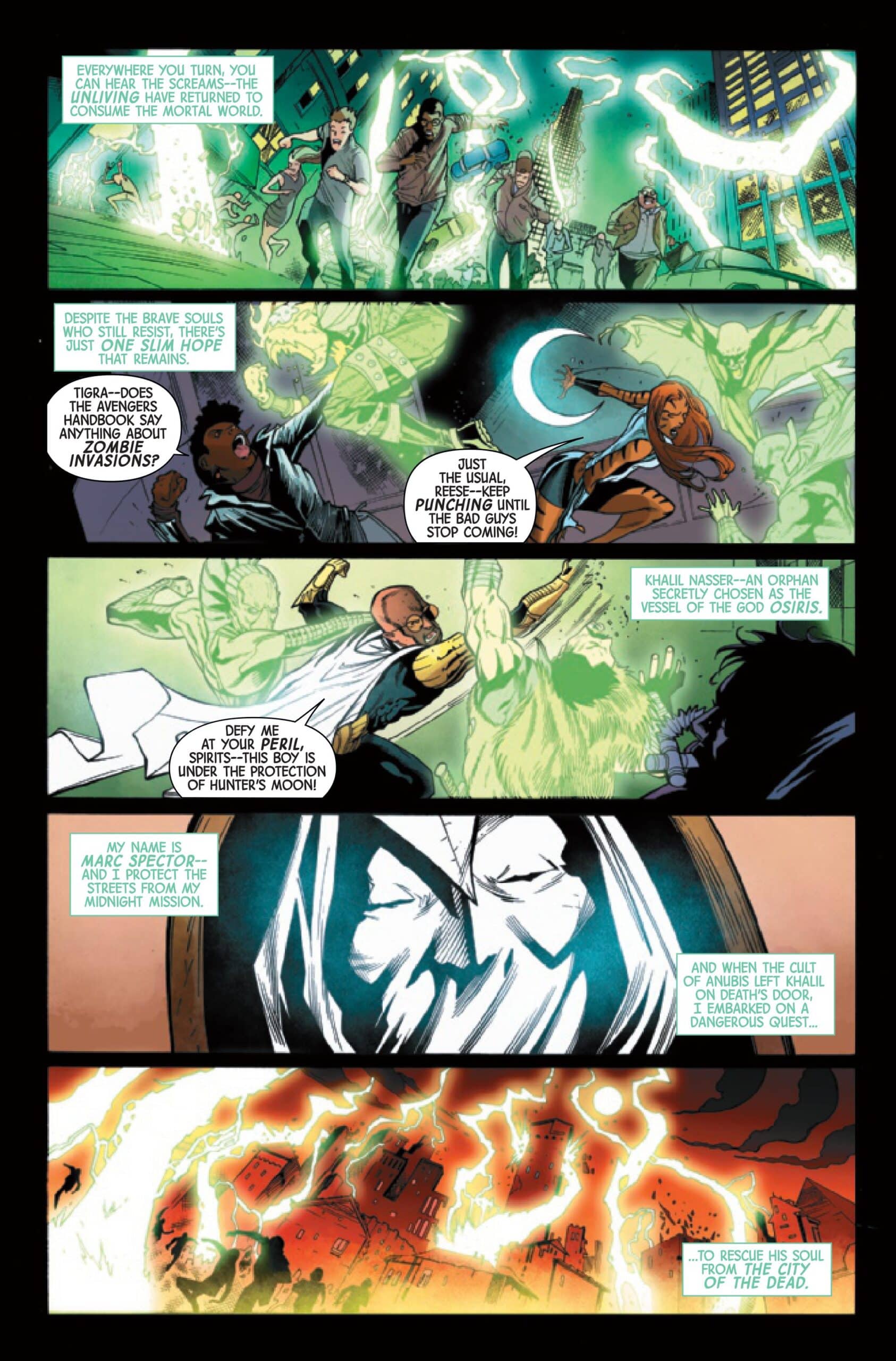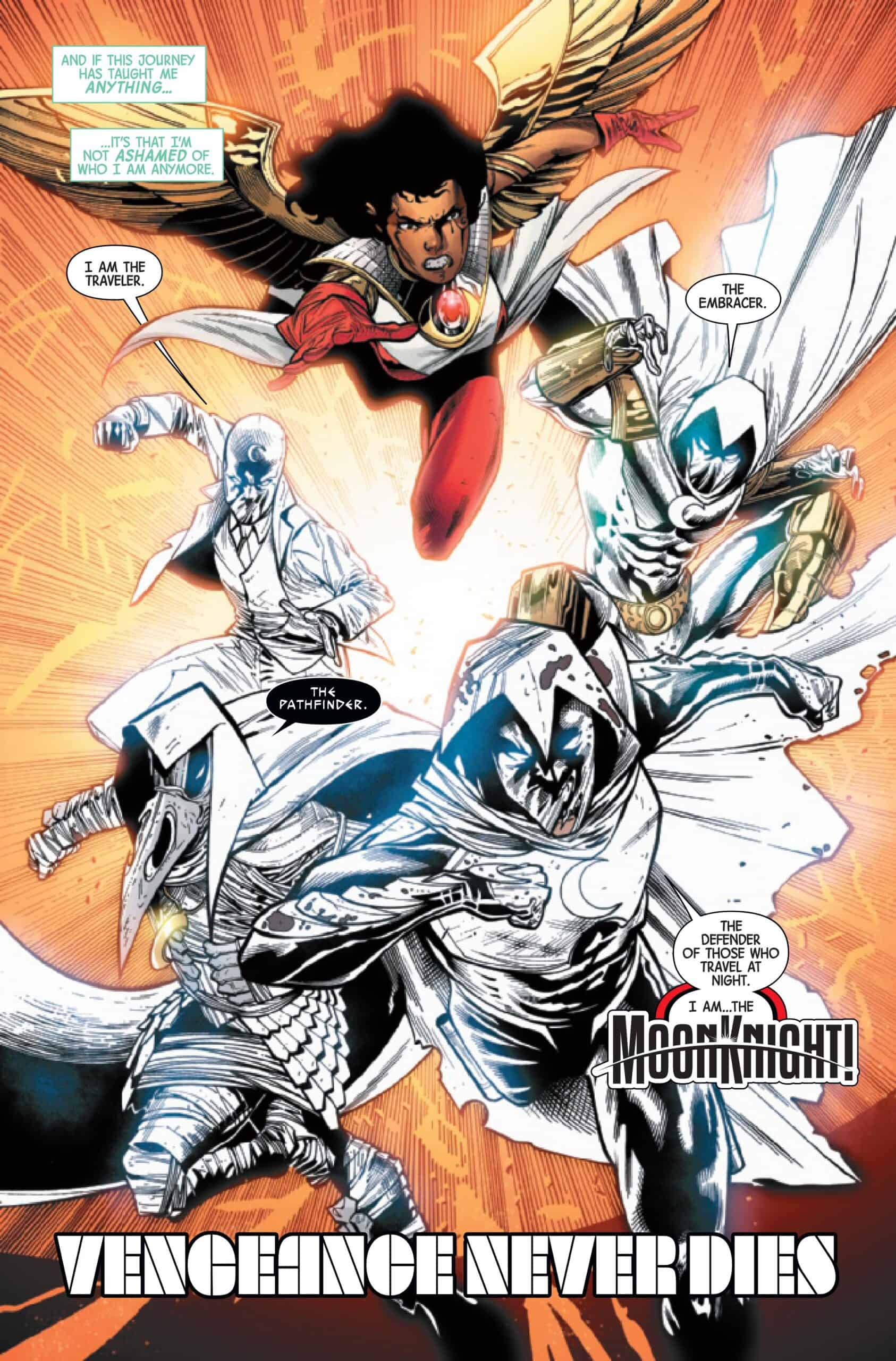Moon Knight: City of the Dead #5

Recap
Having fulfilled his sinister ritual, the JACKAL KNIGHT’s ultimate ascendance is at hand—by conquering the land of the living with the endless hordes of the City of the Dead! Outnumbered and overwhelmed, can Moon Knight dig deep within himself to snatch victory from the jaws of defeat? With all the blood on his hands, can a man like Marc Spector find redemption even at the end of the world? And what might the future hold for the Scarlet Scarab? Don’t miss the thrilling conclusion of Moon Knight’s most death-defying adventure yet!
Review
Moon Knight: City of the Dead #5 – written by David Pepose with pencils by Marcelo Ferreira, inks by Jay Leisten, coloring from Rachelle Rosenberg, and lettering from VC’s Cory Petit – brings the Fist of Khonshu’s journey through the underworld to a close. Jackal Knight, Marc Spector’s brother, has succeeded in finishing a ritual to bridge the living and dead through the powers of Osiris. The god had assigned a mortal boy, Khalil, to become his host, putting a target on the child’s back.
After losing to Jackal Knight, Marc realizes he and Scarlet Scarab (a lost love of Marc’s) need to help Khalil escape Duat, the city of the dead. Moon Knight stands against Jackal Knight, utilizing the underworld’s psychoactive qualities to summon his other personalities for support in the fight. During the fight, the connection between Jackal Knight and Osiris is broken, and the god returns to help stop the villain’s machinations.

Pepose’s script thrives in the use of Chekov’s psychoactive city, using the story element to create a rich motif of overcoming guilt. Marc Spector first showcases his literal bleeding heart as he pulls it from his chest to summon the various aspects of himself. The other versions of himself both reflect a part of the human and hero, speaking to the multifaceted nature of man and myth. Rather than feeling like a tropey reveal, the beat serves as a reinforcement of the exploration this series has been focused on, digging into Marc’s guilt and turning it from subtext to text.
Marc Spector is a man built on the notion of guilt, ranging back to his earliest days as a marine before moving into mercenary work. The thesis of this issue is that overcoming guilt is never easy, but becomes easier with time and acceptance. Marc at one point in the story can pass his history and guilt to his brother (by shoving his living heart into the dead man), and it is more than enough to break the villain’s mind. This moment is a crystallization of the various elements and seals the book’s message of how to handle grief properly.

Guilt shades and colors every aspect of the book, and much of Marc’s arc for this issue is a sense of acceptance and closure. He accepts his role as the many-faced protector of travelers, saving Khalil in the process. He makes peace with losing Layla, embracing the happy memories and her encouragement to continue helping others. Even Badur provides a bit of closure back in the real world, affirming the good work Marc has done in the name of Khonshu.
That sense of accomplishment and growth comes from the perfect alchemy of the issue, blending Pepose’s emotionally driven scripting with the tight, cohesive linework from Ferreira and Leisten. The artists illustrate a stunning blend of action and expression, grounding the high-flying, kinetic fighting with human emotionality. The pain, shame, guilt, and rage are evident in every character’s face and body, with thicker lines or simplified details working in favor of the emotion. These characters and the world feel lived in and worn, aging and weighing down the people in an organic way.
The artistic duo also brings a sense of originality and cohesion to the look of the book, from Spector’s various designs to the rogues gallery, and even the other mythical elements. In the fight sequence with multiple Moon Knights, the layouts and linework operate in service of clarity, ensuring that each aspect has a moment to shine and feel unique while still part of a larger whole. It’s an excellent delineation that speaks to the characterization of the hero, who has made peace with his various personalities.

Rosenberg’s coloring is a large part of what helps to affirm that natural feeling of unity, as the palette emphasizes the mythical elements of the vigilante while highlighting their differences. The infusion of gold into the two designs gives a bit of regality to the figures as they stand taller, while the other two looks (the standard costume and the Mr. Knight look) hue closer to the all-white tone. The glowing effect is present in all four and gives the sense that their power is stemming from the same place even as they work on independent tasks.
Final Thoughts
Moon Knight: City of the Dead #5 is a strong closer to a meat-and-potatoes miniseries, taking the opportunity to flesh out the character of Marc Spector on the eve of his seeming demise. Pepose thrives in the opportunities to explore the character’s principal guilt, and how above all else it is the element that drives Moon Knight forward. Combined with Ferreira and Leistein’s simple but effective linework that works to reinforce the thematic elements of the story.
Rounded out by Rosenberg’s palette, which unifies the various designs and elements, the book sticks the landing in a genuine tale of myth, monsters, and managing the guilt of a hero. Sometimes the Big 2 needs a meat-and-potatoes comic like this to get into the heart of the characters and add a layer of substance.
Moon Knight: City of the Dead #5: ‘Pain and loss, they define us’
- Writing - 10/1010/10
- Storyline - 10/1010/10
- Art - 10/1010/10
- Color - 10/1010/10
- Cover Art - 10/1010/10




